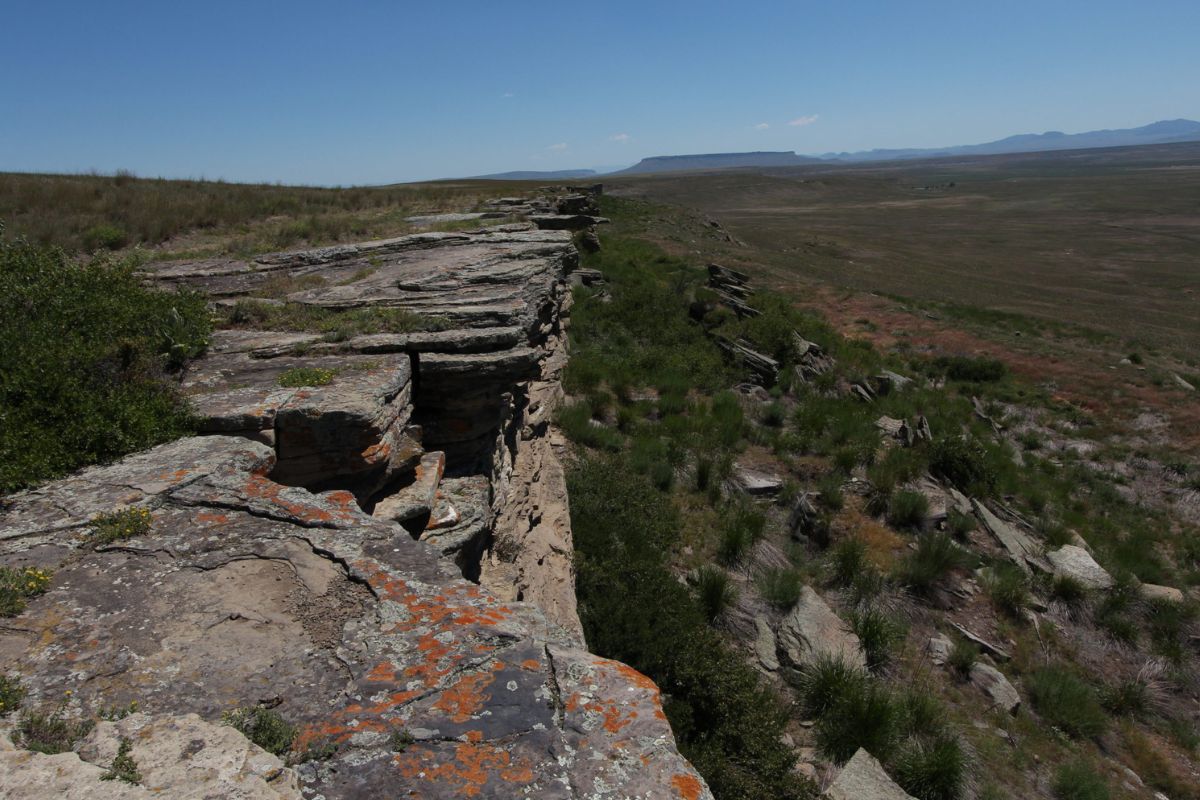Buffalo Jump Adventure At Great Falls’ First Peoples Park

Have you ever wondered what life was like for Native American tribes centuries ago? Great Falls' First Peoples Buffalo Jump State Park offers a unique glimpse into that world. Located in Montana, this park features one of the largest buffalo jump sites in North America. Imagine standing on the same cliffs where tribes once drove herds of buffalo over the edge to provide food, clothing, and tools for their communities. The park includes a visitor center with exhibits on Native American culture, archaeology, and the history of buffalo hunting. Whether you're a history buff or just love the outdoors, this destination promises an unforgettable experience.
Discovering the History of First Peoples Park
First Peoples Park in Great Falls, Montana, offers a unique glimpse into the past. This park, also known as the Ulm Pishkun State Park, is home to one of the largest buffalo jump sites in North America. Here, ancient tribes used the landscape to hunt bison, a practice that was crucial for their survival.
1. Visitor Center
Start your adventure at the Visitor Center. This facility provides an overview of the park's history and significance. Exhibits showcase artifacts, tools, and displays that explain how buffalo jumps worked. Interactive displays make learning fun for all ages.
2. Interpretive Trails
Next, explore the interpretive trails. These paths wind through the park, offering stunning views and informative signs. Learn about the flora and fauna that thrive in this area while imagining how ancient peoples once lived and hunted here.
3. Buffalo Jump Cliff
The Buffalo Jump Cliff is the park's main attraction. This sheer drop was used by Native American tribes to drive bison over the edge. Standing at the top, you can almost hear the thunder of hooves and feel the excitement of a successful hunt.
Experiencing Nature at First Peoples Park
Beyond its historical significance, First Peoples Park is a haven for nature lovers. The park's diverse ecosystems provide a home for various wildlife and plant species. Whether you're an avid hiker or a casual observer, there's something for everyone.
4. Bird Watching
Bring your binoculars for some bird watching. The park is a hotspot for bird enthusiasts, with species like golden eagles, hawks, and songbirds frequently spotted. Early mornings and late afternoons are the best times to catch a glimpse of these feathered residents.
5. Picnic Areas
Pack a lunch and enjoy one of the park's picnic areas. These spots offer a peaceful setting to relax and take in the natural beauty. Many picnic areas are shaded and equipped with tables, making them perfect for a family outing.
6. Wildlife Viewing
Keep an eye out for other wildlife as you explore. Deer, foxes, and even the occasional coyote can be seen roaming the park. Quietly observing these animals in their natural habitat adds an extra layer of excitement to your visit.
Engaging Activities for All Ages
First Peoples Park offers a variety of activities that cater to visitors of all ages. From educational programs to hands-on experiences, there's plenty to keep everyone engaged and entertained.
7. Educational Programs
Participate in one of the park's educational programs. These sessions, often led by knowledgeable guides, delve into the history and ecology of the area. Programs are designed to be informative yet engaging, making them suitable for both kids and adults.
8. Junior Ranger Program
Kids can join the Junior Ranger Program. This initiative encourages young visitors to learn about the park through fun activities and challenges. Completing the program earns them a Junior Ranger badge, a keepsake of their adventure.
9. Guided Tours
Join a guided tour for a deeper understanding of the park. Expert guides share fascinating stories and insights that you might miss on a self-guided visit. Tours cover various aspects of the park, from its historical significance to its natural wonders.
Planning Your Visit to First Peoples Park
Before heading out, it's helpful to plan your visit. Knowing what to expect and what to bring can make your trip more enjoyable and stress-free.
10. Best Times to Visit
Consider the best times to visit. Spring and fall offer mild weather and fewer crowds, making these seasons ideal for exploring. Summer can be hot, but it's also when the park hosts special events and programs.
11. What to Bring
Pack accordingly for your trip. Comfortable walking shoes, sunscreen, and plenty of water are essentials. A camera is also a good idea to capture the stunning scenery and memorable moments.
12. Accessibility
The park is accessible to visitors of all abilities. Paved paths and ramps ensure that everyone can enjoy the park's features. If you have specific accessibility needs, contact the Visitor Center for more information.
The Final Stop on Our Great Falls Adventure
Great Falls, Montana, offers a mix of history, nature, and culture. Visiting First Peoples Buffalo Jump State Park is a must. The park's cliffs and trails tell stories of Native American history. The Lewis and Clark Interpretive Center brings explorers' tales to life. For nature lovers, Giant Springs State Park is a gem with its clear waters and scenic views. The C.M. Russell Museum showcases Western art, capturing the spirit of the frontier. Downtown, you'll find charming shops and eateries that add to the city's appeal. Great Falls isn't just a place to visit; it's a place to experience. Whether you're hiking, learning, or just soaking in the views, this city leaves a lasting impression. Pack your bags and get ready for an unforgettable trip to Great Falls.

